Votes for Women
Votes for Women!
A Mansfield Women’s Suffrage Banner

One of the most interesting items we have in our museum collection is a large fabric banner, of the type carried on a tall pole at protest marches and demonstrations. Its origins are a bit of a mystery as we don’t have any record of when it was donated to the museum, or where it was before that. We can examine it for clues, though, and make some guesses about its history!
The banner is home-made. It is constructed from pieces of brown cotton fabric stitched together and hung over a wooden pole. The pole has brass finials attached to each end, much like a curtain rod. Cream lettering and decoration has been painted onto the fabric, in the same way that a traditional signwriter would make a shop sign. This makes it neat and easy to read, and the lettering stands out, even from a distance.
The word ‘Mansfield’ is clear, suggesting that it was made and used here. At the bottom of the banner, the letters W and S are entwined together, as highlighted here:
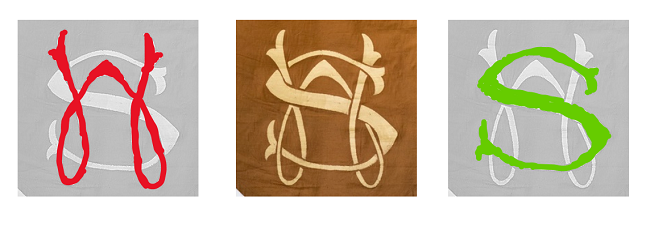
They stand for ‘women’s suffrage’, or the campaign to allow women the right to vote in elections. This is confirmed by the ribbon at the top, which is red, white, and green – the colours of the suffragists. Unlike the more militant suffragettes (who used purple, white and green as their colours), the suffragists used debate and peaceful protest to make their arguments.
Traditionally, only men were allowed to vote, but there was growing anger against this unfairness in the late 19th and early 20th centuries. In 1913 supporters of the cause marched from across the country to meet in London. This was known as the Pilgrimage for Women’s Suffrage. This map shows the routes of the processions; the march from Newcastle came through Mansfield on Tuesday 8 July, on its way to meet the other marchers in the capital. A newspaper cutting from the Mansfield Reporter details (and criticises) the hostile reception that the suffragists received from some citizens in Mansfield. The reporter suggests that the violent actions of the suffragettes may have contributed to people’s harsh reaction to this peaceful protest.
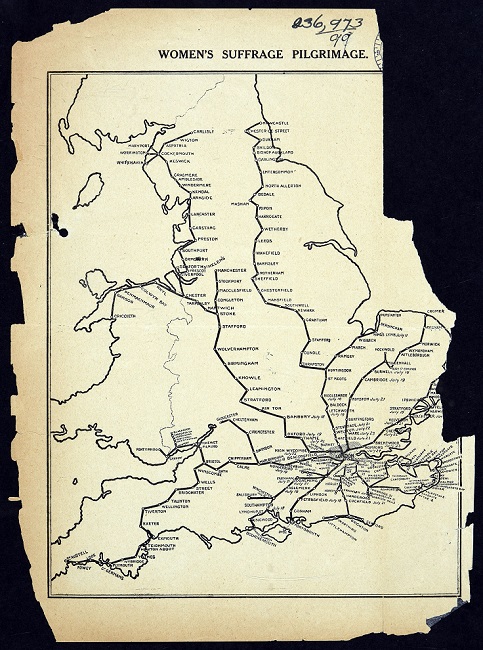
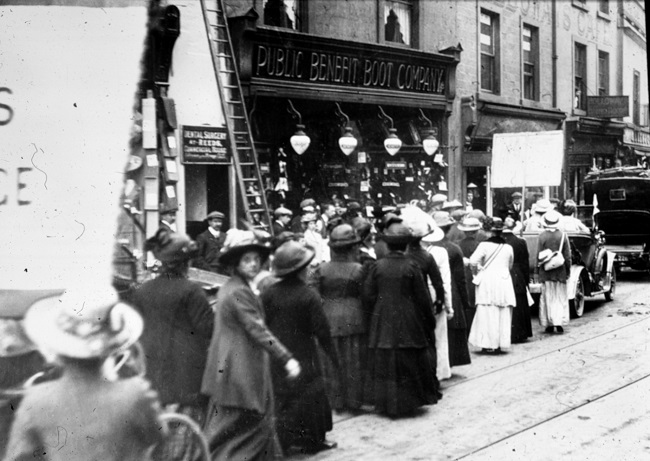
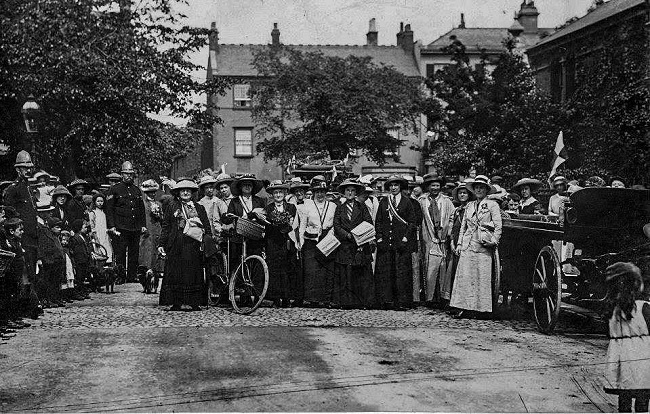
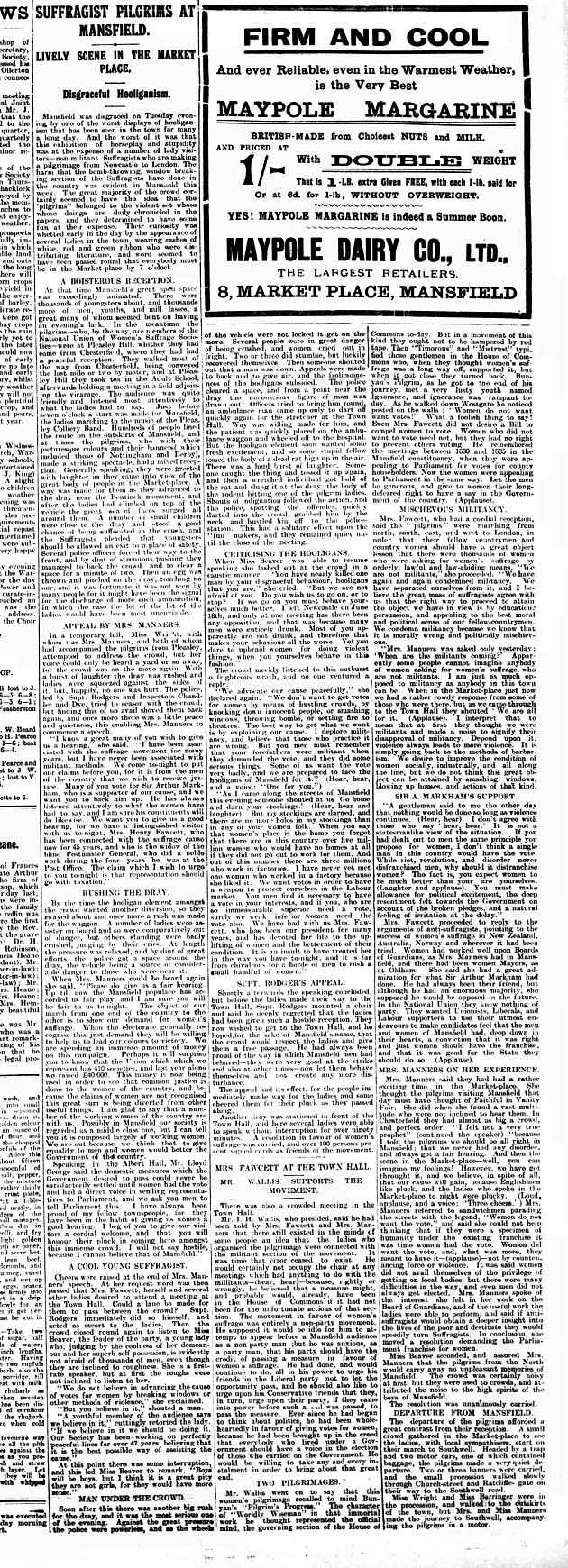
Despite the antagonism of some, the cause of women’s suffrage was supported by many people. This photograph shows a large group of men, women, and children outside a school, holding a banner reading ‘Votes for Women’.
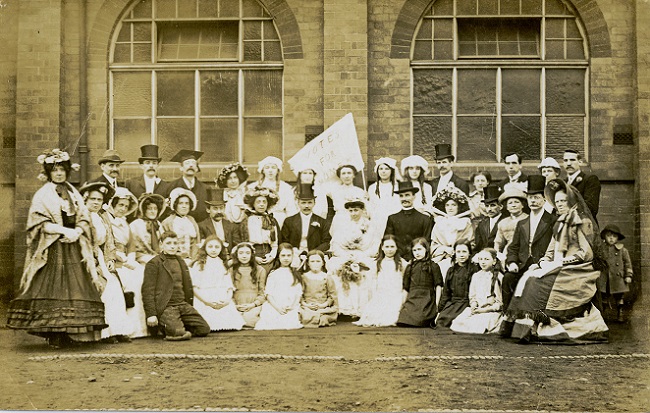
It seems likely from all these clues that the banner in our collection was carried by a Mansfield contingent of suffragists at a demonstration or march, possibly even the national pilgrimage in 1913. It’s a tangible link to the women whose actions paved the way for an equal say in the running of the country, over 100 years ago. Women over 30 who owned property were given the right to vote in 1918. Ten years later, the law finally became equal, with women having the same rights as men – all adults aged 21 or over could vote in elections, regardless of their property status. The voting age was reduced to 18 in 1969.
Anja Thompson-Rohde, Collections and Interpretation Officer, with thanks to the Old Mansfield Society
